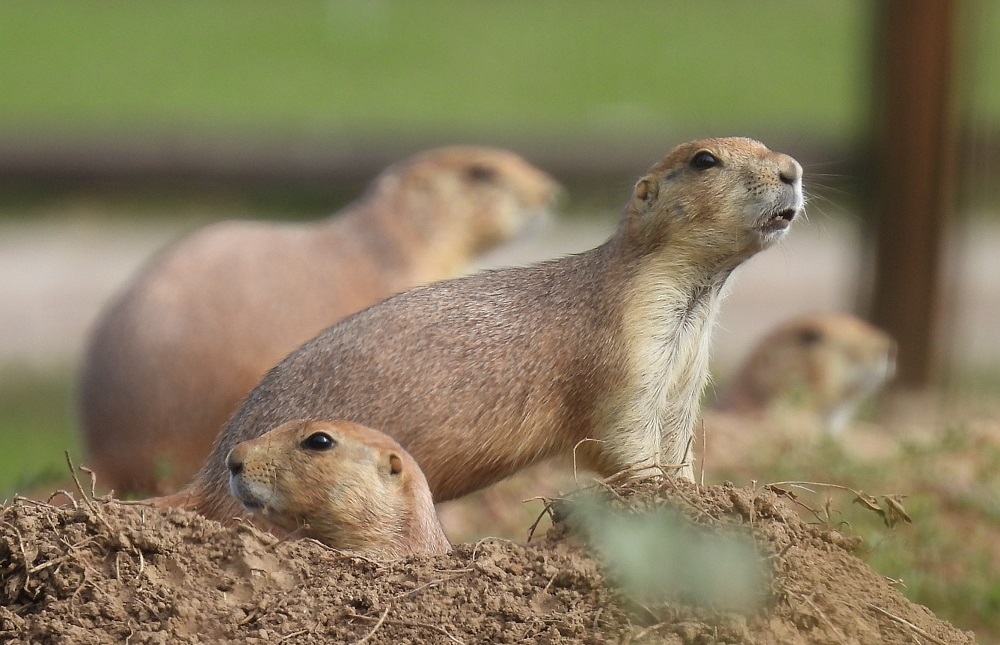September 12, 2021 – Cooler temperatures finally
I visited the Willow Spring Open Space the morning after a cold front moved through. We finally had a break from the over-90 degree days and I could actually see the mountains for the first time in weeks. Hooray!
When I started, it was a very pleasant 66 degrees and partly cloudy. I wasn’t alone in wanting to be there in the cool morning – there were many, many dogs being walked. It was so pleasant that I went through the underpass below Dry Creek Road and visited the Prairie Dog colony there.
All along the way, I was impatiently looking for signs of fall, but it still looked like late summer; just barely on the edge of fall.
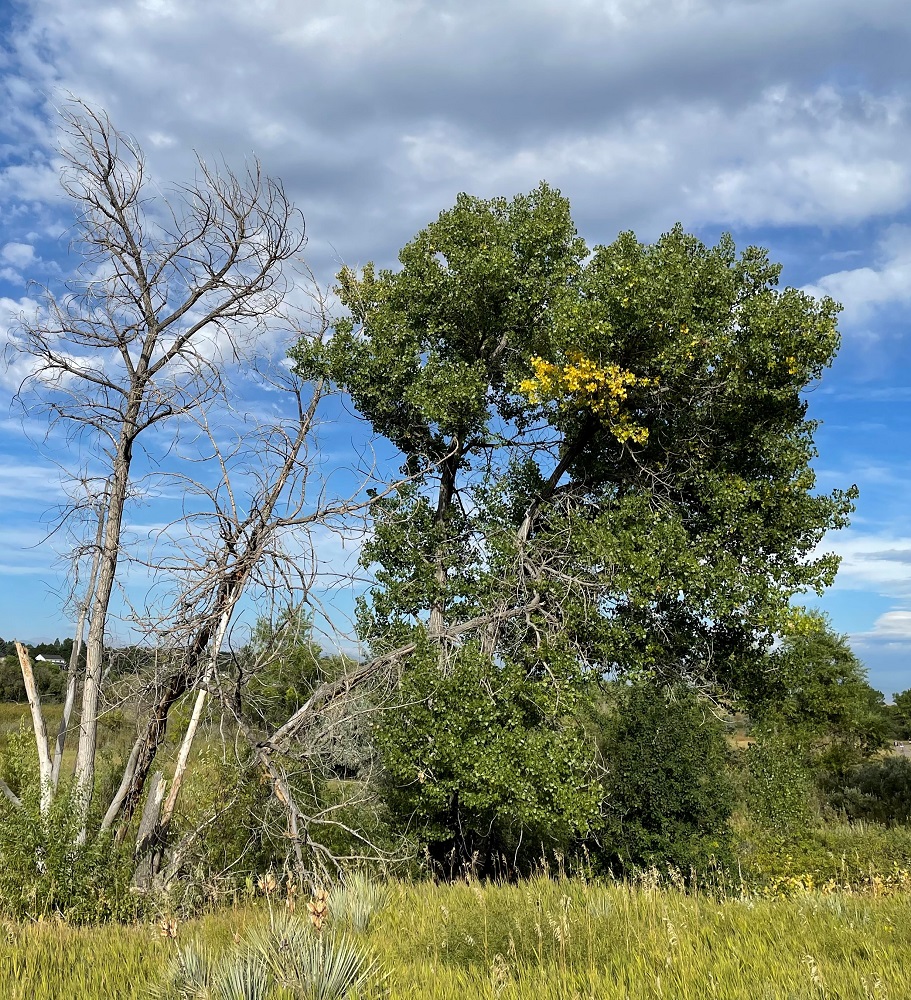
Plants – signs of late summer and early fall
Some of the signs of late summer/early fall included some patches of leaves on the Plains Cottonwood trees turning gold, Common Rabbitbrush starting to bloom, and a few hardy Prairie Sunflowers continuing to bloom along the side of the path.
Common Rabbitbrush
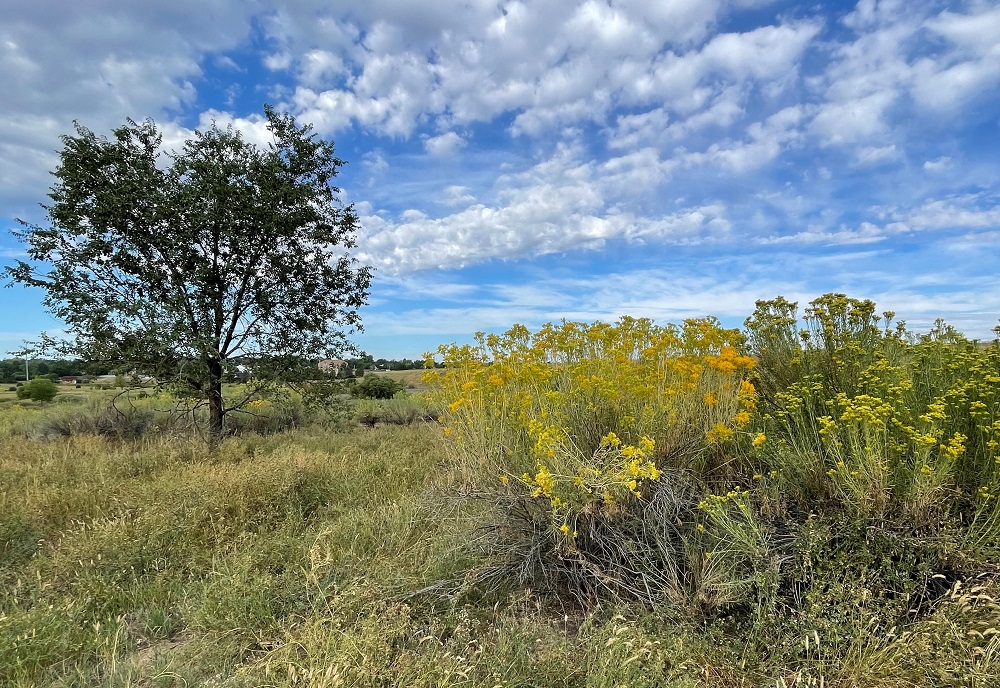
Common Rabbitbrush is a shrub which transforms into a spectacular mound of bright yellow blooms in the fall.
Prairie Sunflowers
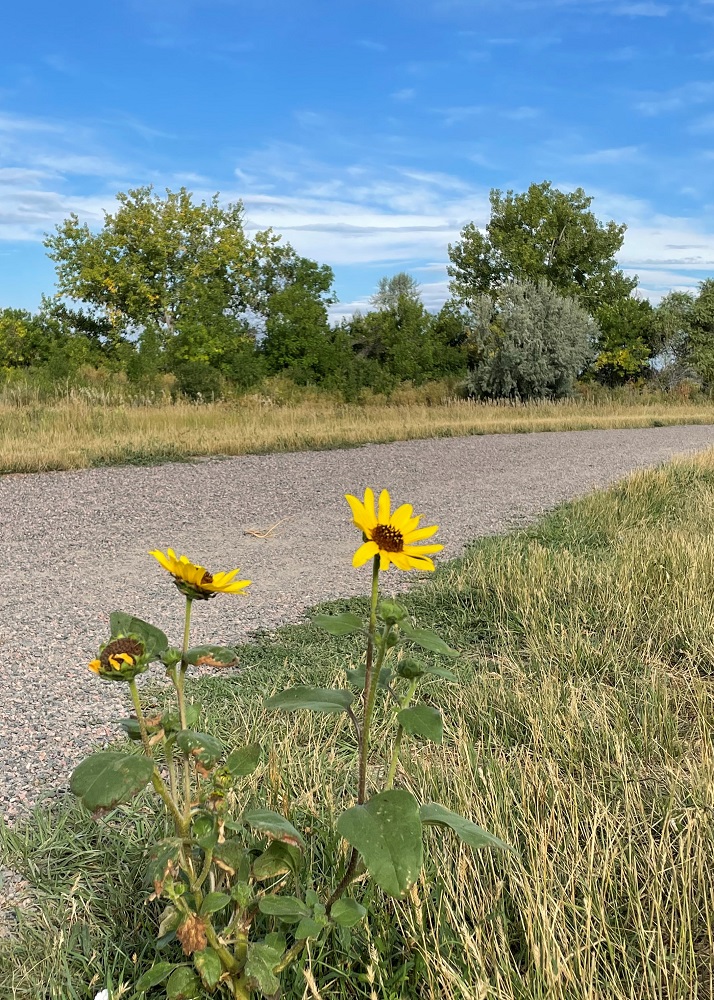
Along the mowed edge of the path, there were some hardy Prairie Sunflowers (Helianthus petiolaris) which popped up after the mowing. They are a common flower of the grasslands and bloom Summer through Fall. They can reach up to 4 feet tall, and the Goldfinches love to sit on them and eat the sunflower seeds.
Russian Thistle – one of our tumbleweeds

Russian Thistles (Salsola collina) are still green and lining the top of the Englewood Dam. These are plants that were introduced from Russia in the late 1800’s.
When they are mature, they dry up, turn brown, and break away from the ground to be blown by the wind. As they are blown around, the seeds are dispersed and easily germinate, needing little moisture.
Plant seeds are displaying the many ways that they spread
Cattail seeds blow in the wind

The Cattail flowerheads are starting to release their seeds. These are wind-borne, and are another way that cattails spread, in addition to their spreading by rhizomes (underground stems).
Milkweed seeds also blow in the wind
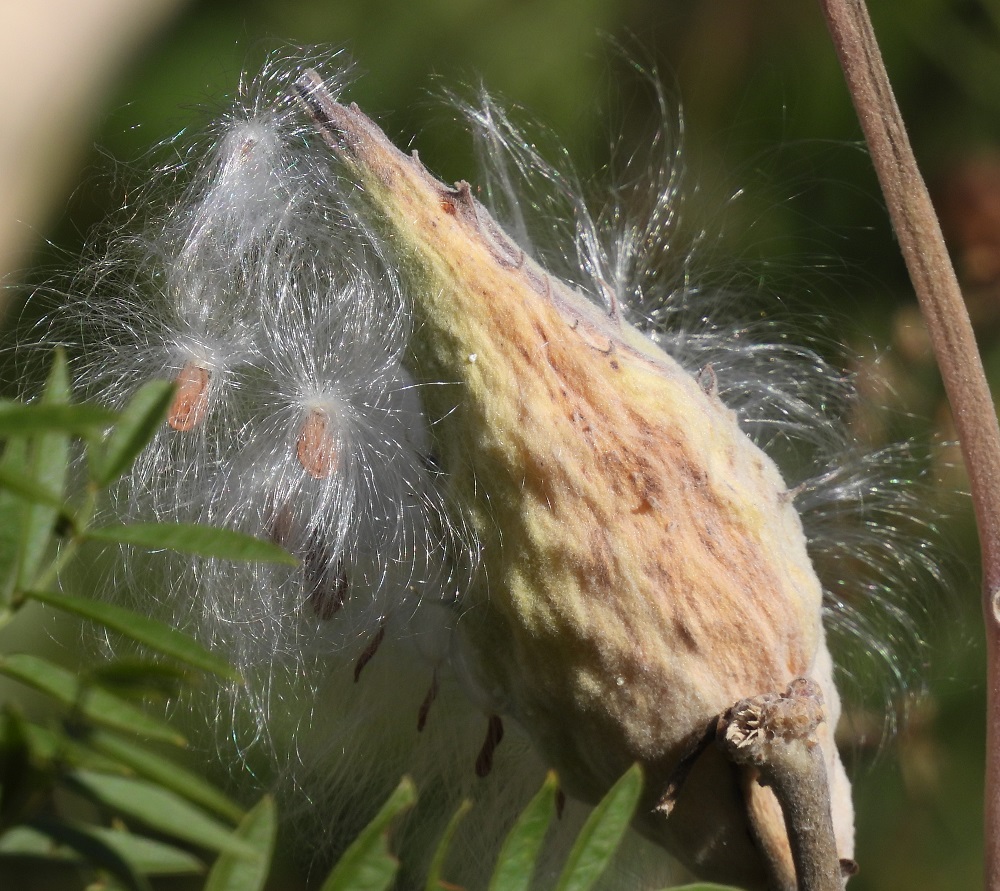
The Showy Milkweed (Asclepias speciosa) blooms formed seed heads in August, and now those seed heads look like they are exploding with seeds carried by the wind on fine hairs. The leaves to these milkweeds are also turning yellow with the change in season.
Milkweeds are known for being a vital larval food for Monarch butterflies and are native to this area.
Wild licorice seed pods stick like Velcro

The Wild Licorice shrubs (Glycyrrhiza lepidota) are full of brown bur-like seed pods. These seed pods resemble Velcro and attach themselves to whatever happens to be passing by, and spread their seeds when they are picked off.
Common Hawthorne tree: fruits are eaten and the seeds are spread by birds
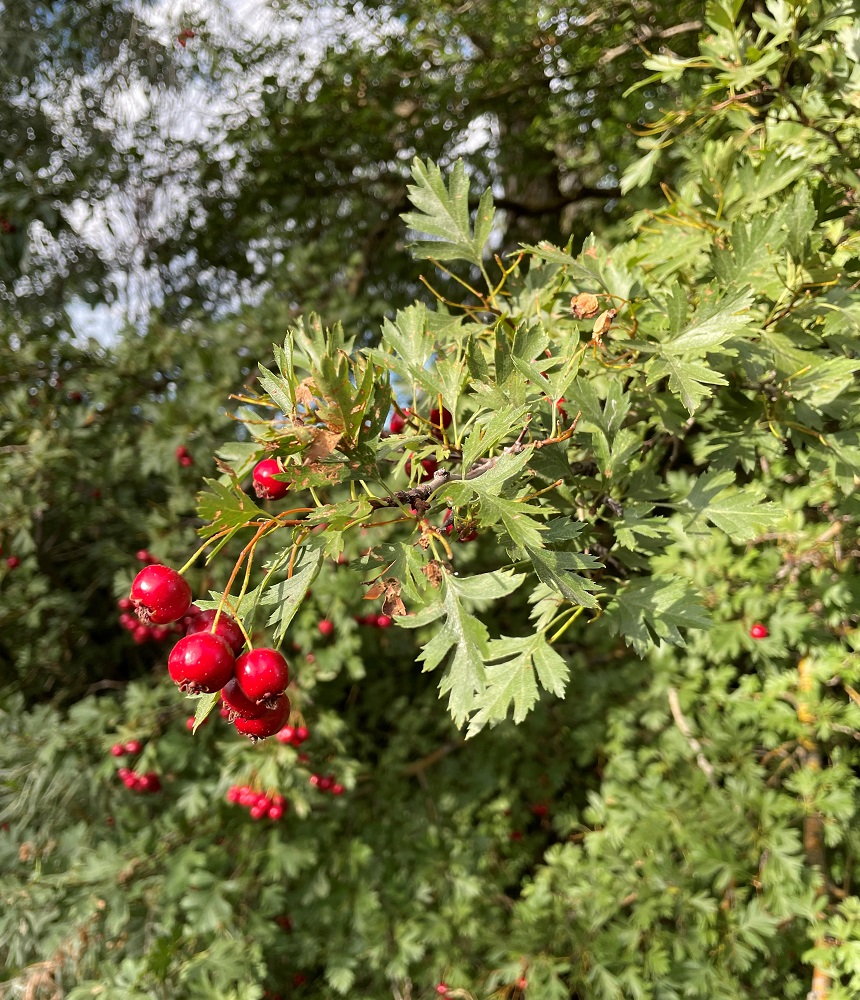
There are some small Common Hawthorne trees (Crataegus monogyna) that have escaped from cultivation and are growing in the Open Space. They can be found along the path on the east side of the Open Space near the intersection with the path that goes by Homestead Elementary school.
They have one seed that is in each of these small apple-like fruits which are called pomes. These seeds are spread by birds or animals eating the fruits and then having the seed come out in their scat.
A few birds were around
While I was walking, looking at plants for signs of fall, I saw quite a few swallows darting around over the marsh, eating insects. Swallows recently spotted in the Willow Spring Open Space include Barn Swallows and Northern Rough-winged Swallows, but I wasn’t able to pin down which type of swallows I was seeing.
I also heard Black-capped Chickadees and saw female Red-Winged Blackbirds and a Northern Flicker in the tall trees.
Northern Flicker
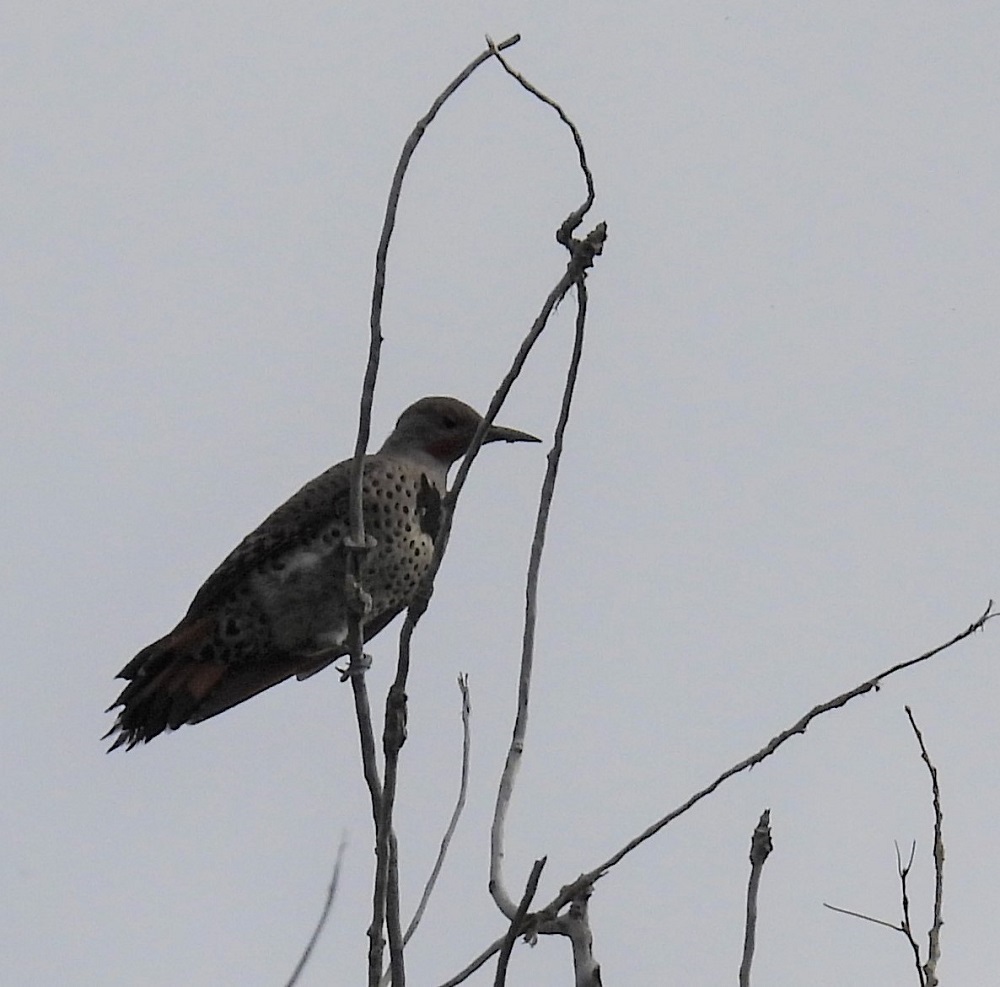
Northern Flickers are in the woodpecker family and climb trees with their strong toes, bracing themselves with stiff tail feathers when they are on the tree trunk. They excavate their own nest holes in tree trunks.
I identified this flicker by its size, bill shape and coloration. They are brown with a large black chest spot and black spots on the belly. Their bills are long and sharp in order to get at the insects in the trees and to make their nest holes.
The other side of Dry Creek Road
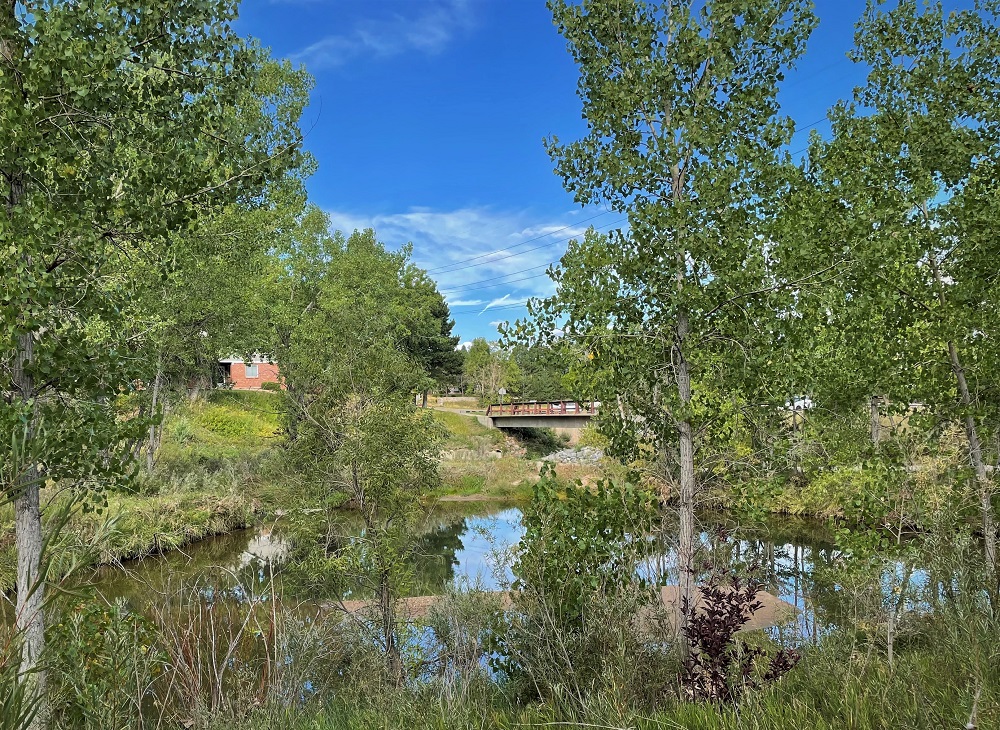
Through a tunnel under Dry Creek Road, the bike path follows Willow Creek past a small pond, through a grove of Plains Cottonwood trees and past a Prairie Dog colony. On hot days, I like to go to that cool grove of trees as there are always birds to see there!
Prairie Dogs
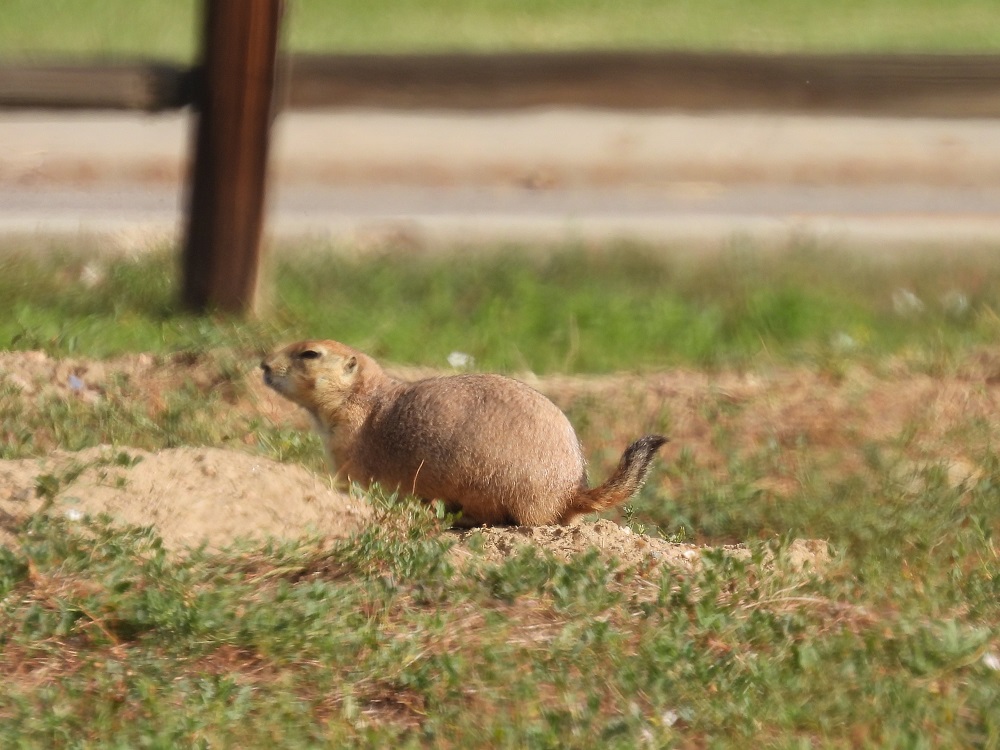
There is a Prairie Dog colony right along Dry Creek Road, just off the path along Willow Creek. There are 2 types of Prairie Dogs in Colorado, White-tailed and Black-tailed. As you can tell by the black on the tip of their tails, these are Black-tailed Prairie Dogs, which are much more common at this elevation. White-tailed Prairie Dogs generally live at higher elevations.
Prairie Dogs are found in dry prairies, as their name suggests. They are ground-dwelling squirrels, who dig elaborate burrows in colonies, called towns. Not only do they live in these burrows, but many other animals appropriate them for homes as well.
They eat mostly grasses, but also will eat insects, especially grasshoppers. If a predator approaches, a sentinel issues a warning bark, generally accompanied by a flick of the tail. Prairie Dogs are food for hawks, coyotes, foxes and many other animals.
Black-tailed Prairie Dogs do not hibernate, although they may stay underground for long periods of time during cold weather.
For many years there was a Prairie Dog colony to the NE of the Englewood Dam. As described in an article in the Denver Post, the Prairie Dogs were exterminated in 2015 by the Urban Drainage and Flood Control District (now Mile High Flood District) to prevent damage to the dam. I am glad to see the Prairie Dogs have a town here on the South side of Dry Creek.
References and Further Reading
- Kaufman Field Guide to Birds of North America, by Kenn Kaufman, 2000
- Pete Dunne’s Essential Field Guide Companion, by Pete Dunne, 2006
- The Naturalist’s Guide to the Southern Rockies, by Audrey DeLella Benedict, 2008
- Mammals of the Central Rockies, by Jan L. Wassink, 1993
- Explore Colorado, a Naturalist’s Notebook, by Frances Alley Kruger and Carron A. Meaney, published by Denver Museum of Natural History and Westcliffe Publishers, 1995
- Botany in a Day: The Patterns Method of Plant Identification, by Thomas J. Elpel, 1967
- Flora of Colorado, by Jennifer Ackerfield, 2015
- Colorado Native Plant Database Data Portal, Colorado State University
- Colorado Flora Eastern Slope: A Field Guide to the Vascular Plants, 4th Edition, by William A. Weber and Ronald C. Wittmann, 2012
- Wildflowers of the Rocky Mountain Region, Denver Botanic Gardens, 2018


